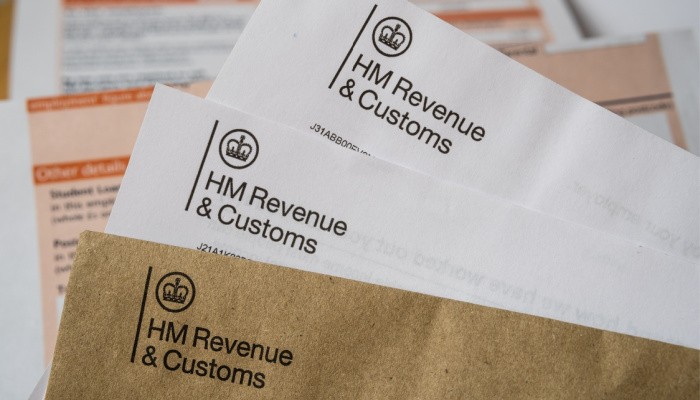The delayed Autumn Statement 2022, which was announced on 17th November, has prompted accusations of the government imposing a ‘stealth tax’ by way of fiscal drag.
The changes to tax rules and continued threshold freezes that were revealed by Chancellor Jeremy Hunt are expected to affect millions of people over the next 5–6 years.
Here’s what you need to know about fiscal drag, the primary taxes affected by the one-two punch of inflation and allowance freezes, and what you can do to reduce the financial squeeze.
What is fiscal drag?
Fiscal drag happens when rising wages combined with frozen tax thresholds ‘drag’ taxpayers into a higher tax bracket. This is also known as bracket creep.
It’s generally referred to as a ‘stealth tax’ because it leads to more people paying more tax, without the backlash that would come with the government actively increasing taxes.
Tax allowances are typically increased to keep pace with the cost of living, but many have been frozen for several years and were set to remain frozen until 2025–2026.
With inflation hitting 11.1%
in October 2022 – the highest in 40 years – the need for wages to increase to keep up with consumer prices will undoubtedly push more people into paying basic rate tax who weren’t liable before, or push them from a lower rate to a higher tax rate.
Fiscal drag on Income Tax
The tax-free personal allowance of £12,570 and the basic rate upper threshold of £50,270 will now remain frozen until April 2028. Anyone whose earnings fall between these amounts will pay 20% in Income Tax, while anyone earning £50,271+ will be charged the higher rate of 40%.
With these thresholds frozen for the next 5 years, if wage growth manages not to trail too far behind inflation, we can expect hundreds of thousands of workers to be dragged into a different tax band.
From April 2023, the additional rate threshold will be lowered from £150,000 to £125,140, meaning anyone earning £125,141+ will have to pay increased Income Tax at 45%.
Other thresholds are also affected by fiscal drag simply because the government ignores them rather than adjusting them. For example, the income limit for withdrawing the personal allowance has remained at £100,000 since its introduction in 2010, which can lead to a 60% tax rate.
Similarly, the income limit for the High Income Child Benefit Charge has stayed at £50,000
since it was introduced in 2013 – now affecting 1 in 5 families, compared to the original 1 in 8.
As an example of how fiscal drag can increasingly affect tax liability, Interactive Investor reports that an average worker earning £30,000 a year could pay £1,919 extra tax between now and 2028–2029. Meanwhile, a worker with an annual salary of £50,000
would pay £4,280 more over this time.
For lower earners on £20,000 a year, their tax burden is likely to increase to 15%
of their take-home pay, costing them an extra £1,267 in Income Tax
if nothing changes in the next 5 years.
Fiscal drag on Inheritance Tax
The Inheritance Tax nil rate band has been stuck at £325,000 since April 2009
and was also set to remain there until 2026 – until the new Chancellor announced the IHT freeze would be extended until 2028 alongside the Income Tax personal allowance and basic rate thresholds.
Inheritance Tax (IHT) is charged at 40% on anything above the £325,000 threshold. So, when someone passes away, the inheritor of their estate could be faced with a large tax bill during an already difficult time.
With property values soaring and wages increasing over the last decade, while the tax-free allowance on inherited assets remained stubbornly the same, is it any wonder that Inheritance Tax receipts have doubled since 2012?
The amount that the government has clawed back in IHT
increased by 14%
between November 2021–November 2022 alone, with the freeze expected to double this to 28% by 2027–2028.
While IHT affects fewer people than Income Tax, the number of people becoming liable for IHT is also increasing, making lifetime wealth planning and tax planning more important than ever.
Why is the government freezing tax allowances?
With such a potentially grim outlook for many people, you might be wondering why the UK government is allowing fiscal drag to negatively impact average working people rather than implementing a wealth tax on the top 10%.
The aim is to raise as much tax revenue as possible from as many people as possible, with the further Income Tax freezes alone expected to raise £26 billion a year for public finances by 2027–2028
(as stated in the latest report from the Office for Budget Responsibility).
Tax planning to mitigate fiscal drag
As with any changes – or lack thereof – to tax allowances and rates, the best way to mitigate negative impacts on your finances is to plan ahead as much as possible.
Income Tax planning is particularly important for spouses, who may be able to share allowances to ease the burden of income limits, but anyone can benefit from measures such as adjusting pension contributions to moderate tax-eligible income.
From writing a will and cleverly managing gift allowances to making the most of residence nil rate band relief, there are several ways to mitigate Inheritance Tax, too.
Whatever your situation may be, gbac can help you to make the most of your annual tax allowances and plan effectively to improve your financial future. If you would like to benefit from our tax consultancy
or probate services, please contact our accountants in Barnsley today.
